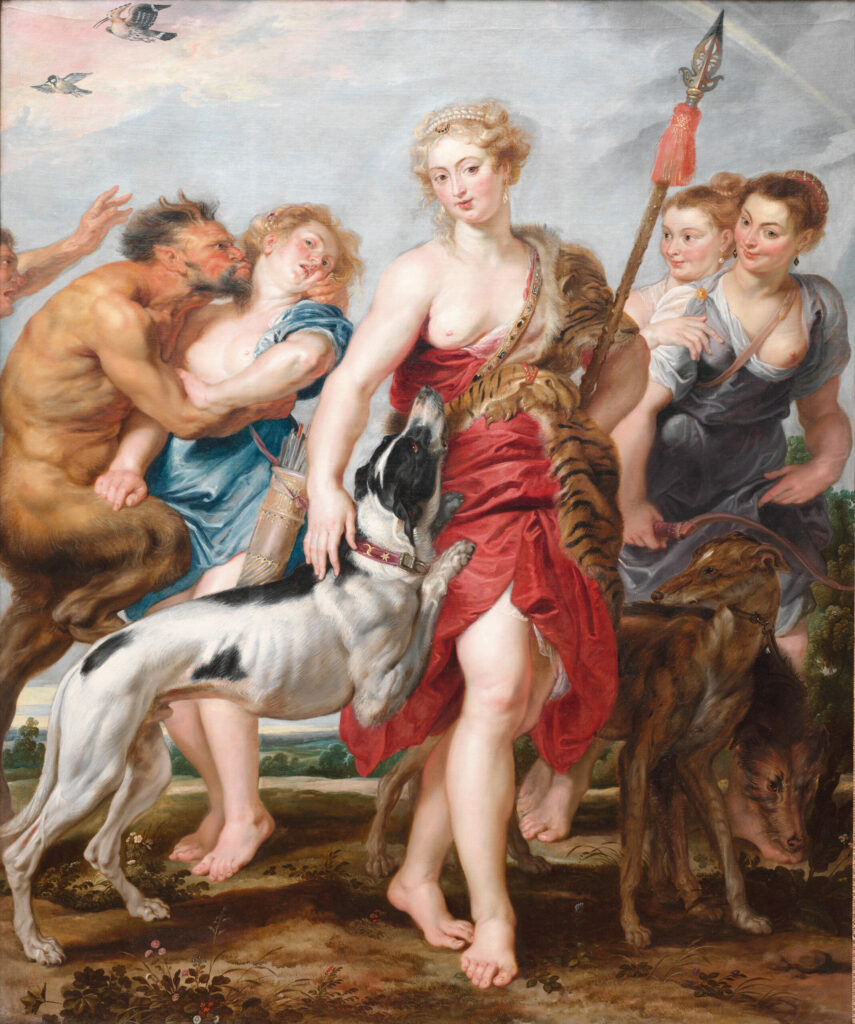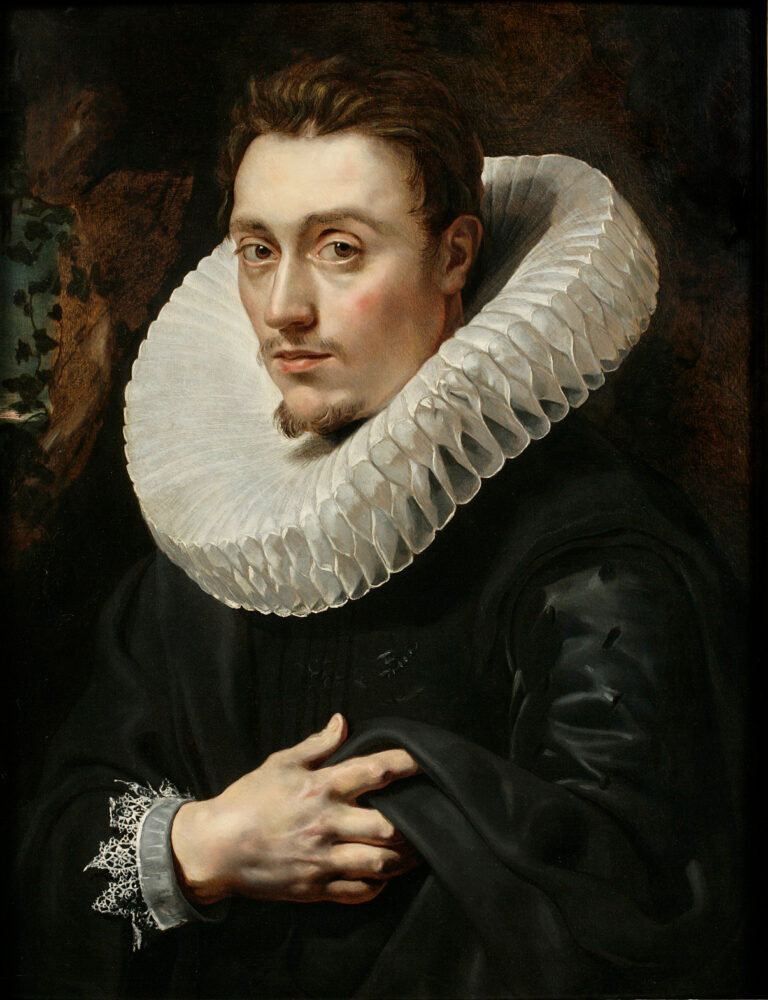
What an iridescent symphony unfolds in this mythological apotheosis, where Rubens unleashes the full sensuality of his Flemish genius!
Diana radiates sovereign beauty, her lunar crescent crowned with a glittering diadem that proclaims her dual nature as huntress and nocturnal goddess. The Antwerp master orchestrates a dramatic ballet: while on the left a nymph vehemently repels a satyr’s advances—embodying the eternal struggle between purity and lust—Diana advances toward us with sculptural grace, escorted by her faithful companions and alert greyhounds. The flesh tones blend with carmine reds and ultramarine blues in a chromatic ensemble typical of the master’s palette. A touching detail emerges: the nymph bearing the features of Isabella Brant, immortalizing the painter’s beloved wife.
Work Details
- Diana and Her Nymphs Departing for the Hunt, c. 1615, by Peter Paul Rubens and workshop
- 216 × 178.7 cm (85 1/16 × 70 3/8 in.)
- The Cleveland Museum of Art, displayed in Gallery 212: Baroque Painting and Sculpture
- https://www.clevelandart.org/art/1959.190
A protean genius of the Flemish Golden Age, Peter Paul Rubens (1577–1640) embodies Baroque art in all its triumphant splendor. Born in Siegen, Westphalia, trained in Antwerp, then perfected during his formative Italian journey (1600-1608) where he studied Titian, Veronese, and Caravaggio, this humanist nobleman revolutionized European painting through his masterful synthesis of Northern tradition and Italian innovation. A high-ranking diplomat serving European courts, ennobled by the kings of Spain and England, he brilliantly balanced a distinguished political career with artistic production of astounding fertility. His Antwerp workshop—a veritable masterpiece manufactory run with keen business acumen—trained illustrious disciples including Van Dyck and Jordaens. Master of all genres, he developed an aesthetic that profoundly influenced Western art.

